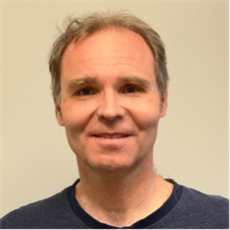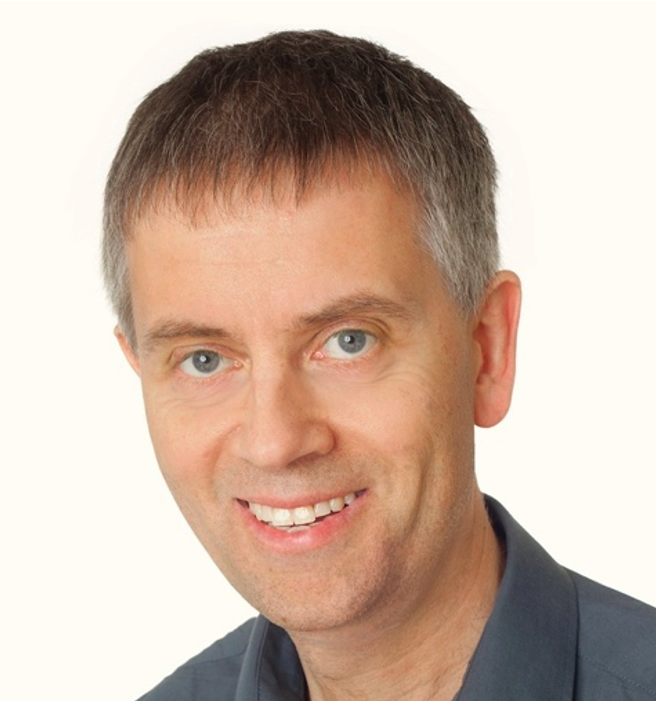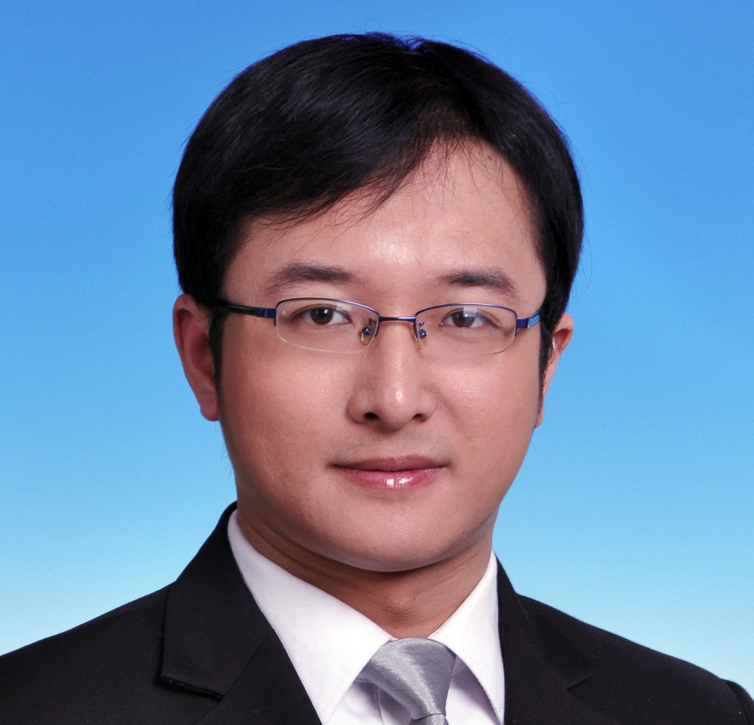
Prof. Peter Tiňo
Title: Searching for multiple low-dimensional needles in a higher-dimensional haystack
Abstract: The usual scenario of Manifold Learning is the one where the data cloud is distributed around a single manifold (known dimensionality is a bonus). Often, such manifolds are represented through neighbourhood graphs or local linear patches that are conveniently "glued together". The embedding space can be high-dimensional (e.g. image space) and an explicit smooth model of the manifold is rarely required.
In this talk, we will explore a very different scenario: The data can be distributed around an unknown number of low-dimensional noisy manifolds of diverse and unknown dimensionalities, immersed in a (possibly intense) background noise. It is up to us to detect all the distinct manifolds, construct smooth models of their skeletons and provide the corresponding explicit probabilistic noisy manifold models.
To that end, we will generalize Generative Topographic Mapping to abstract latent spaces, so that arbitrary low-dimensional manifolds can be modeled (including non-orientable ones, e.g. Moebius strip). We will show how such latent spaces can be constructed through a dedicated manifold crawling procedure and then smoothly embedded in the data space. Finally, the noisy manifolds are captured by endowing the embedded latent spaces with suitable probabilistic models.
We will illustrate the methodology in the context of detection of low-dimensional manifold structures emerging in astrophysics. In particular, we will show how a dwarf galaxy disruption process in a galaxy cluster can be analysed in a new way through probabilistic modelling of streams, bubbles and shells forming part of the "jelly-fish" galactic structure. We will also demonstrate how this methodology can be used to study formation of large scale dark matter filaments and dynamics around them in cosmological simulations.
Biography: Peter Tiňo holds a Chair position in Complex and Adaptive Systems at the University of Birmingham, UK. His interests span complex systems, machine learning, neural computation, probabilistic modelling and dynamical systems. Peter is fascinated by the possibilities of cross-disciplinary blending of machine learning, mathematical modelling and domain knowledge in a variety of scientific disciplines ranging from astrophysics to bio-medical sciences.
Prof. Tiňo has served on editorial boards of a variety of journals including IEEE Transactions on Neural Networks and Learning Systems, IEEE Transactions on Cybernetics, Scientific Reports, and Neural Computation and (co-)chaired Task Force on Mining Complex Astronomical Data and Neural Networks Technical Committee (TC of IEEE Computational Intelligence Society). Peter led an EPSRC-funded consortium of six UK universities on developing new mathematics for personalised healthcare. He was a recipient of the Fulbright Fellowship to work at NEC Research Institute, Princeton, USA, on dynamics of recurrent neural networks, UK–Hong-Kong Fellowship for Excellence, three Outstanding Paper of the Year Awards from the IEEE Transactions on Neural Networks and the IEEE Transactions on Evolutionary Computation, and the Best Paper Award at ICANN 2002.

Prof. Jim Torresen
Title: Sensing and Understanding Humans by a Robot
Abstract: The recent progress in computational intelligence demonstrates how to effectively sense and understand human behaviour. At the University of Oslo, we work – supported by the Research Council of Norway – with research on various types of sensors relevant to analysing human non-verbal expressions and their activities. This is relevant for robots looking after and assisting older people living at home. Introducing this ongoing work is the topic of this talk.
We address the challenge of the expected shortage of healthcare resources in the future as the proportion of elderly people worldwide increases. To handle this challenge, it becomes important that people live as long as possible in their own homes which is also what most older people want themselves. Thus, a rising issue is how to incorporate technology to find efficient solutions for health monitoring and care for older people staying at home. Our projects address computational intelligence research for robots on sensing, reasoning and control, and through interdisciplinary collaboration, as well as legal and ethical issues. We think that design with user participation is important, and thus, we have increased our attention on human–robot interaction studies. This talk will introduce some examples from our work and how we address it from a technical, legal and ethical side.
Biography: Jim Torresen is a professor at the University of Oslo, where he leads the Robotics and Intelligent Systems research group. He is also a PI at the interdisciplinary Centre of Excellence for Interdisciplinary Studies in Rhythm, Time and Motion (RITMO). He received his M.Sc. and Dr.ing. (Ph.D) degrees in computer architecture and design from the Norwegian University of Science and Technology, University of Trondheim in 1991 and 1996, respectively. He has been employed as a senior hardware designer at NERA Telecommunications (1996-1998) and at Navia Aviation (1998-1999). Since 1999, he has been a professor at the Department of Informatics at the University of Oslo (associate professor 1999-2005). Jim Torresen has been a visiting researcher at Kyoto University, Japan for one year (1993-1994), four months at Electrotechnical Laboratory, Tsukuba, Japan (1997 and 2000) and a visiting professor at Cornell University, USA for one year (2010-2011).
Prof. Torresen's research interests at the moment include artificial intelligence, ethical aspects of AI and robotics, machine learning, robotics, and applying this to complex real-world applications. Several novel methods have been proposed. He has published approximately 250 scientific papers in international journals, books and conference proceedings. A number of tutorials and invited talks have been given at international conferences and research institutes. He is in the program committee of more than ten different international conferences, associate editor of three international scientific journals as well as a regular reviewer of a number of other international journals. He has also acted as an evaluator for proposals in EU FP7 and Horizon2020 and is currently project manager/principal investigator in four externally funded research projects/centres. He is a member of the Norwegian Academy of Technological Sciences (NTVA) and the National Committee for Research Ethics in Science and Technology (NENT), where he is a member of a working group on research ethics for AI. More information and a list of publications can be found here: https://www.mn.uio.no/ifi/english/people/aca/jimtoer.

Prof. Ke Tang
Title: Learning to Optimize
Abstract: Real-world optimization problems are becoming increasingly complex such that off-the-shelf algorithms could hardly offer satisfactory performance. On the other hand, the prior knowledge and efforts needed for manually designing a new dedicated algorithm may, in many cases, unaffordable. A data-driven paradigm, termed Learn to Optimize (L2O), provide a potentially powerful way for automated algorithm/solver design. This talk provides an overview on L2O, including the motivating background, key research questions, recent progress, as well as successful case studies.
Biography: Ke Tang is a Professor at the Department of Computer Science and Engineering, Southern University of Science and Technology (SUSTech). His major research interests include evolutionary computation and machine learning, as well as their applications. He is a Fellow of IEEE and Changjiang Scholar Professor for Artificial Intelligence. He is also the recipient of a few national and international awards, such as the IEEE Computational Intelligence Society Outstanding Early Career Award, the Natural Science Award of Ministry of Education of China, and the Newton Advanced Fellowship of the Royal Society, UK.